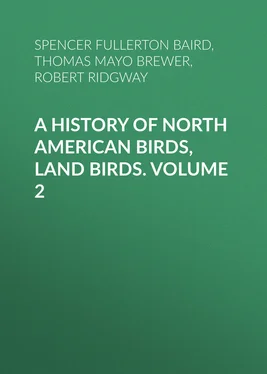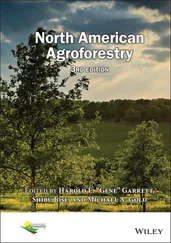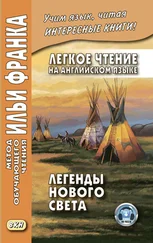Spencer Fullerton Baird - A History of North American Birds, Land Birds. Volume 2
Здесь есть возможность читать онлайн «Spencer Fullerton Baird - A History of North American Birds, Land Birds. Volume 2» — ознакомительный отрывок электронной книги совершенно бесплатно, а после прочтения отрывка купить полную версию. В некоторых случаях можно слушать аудио, скачать через торрент в формате fb2 и присутствует краткое содержание. Жанр: foreign_antique, Биология, foreign_edu, на английском языке. Описание произведения, (предисловие) а так же отзывы посетителей доступны на портале библиотеки ЛибКат.
- Название:A History of North American Birds, Land Birds. Volume 2
- Автор:
- Жанр:
- Год:неизвестен
- ISBN:нет данных
- Рейтинг книги:3 / 5. Голосов: 1
-
Избранное:Добавить в избранное
- Отзывы:
-
Ваша оценка:
- 60
- 1
- 2
- 3
- 4
- 5
A History of North American Birds, Land Birds. Volume 2: краткое содержание, описание и аннотация
Предлагаем к чтению аннотацию, описание, краткое содержание или предисловие (зависит от того, что написал сам автор книги «A History of North American Birds, Land Birds. Volume 2»). Если вы не нашли необходимую информацию о книге — напишите в комментариях, мы постараемся отыскать её.
A History of North American Birds, Land Birds. Volume 2 — читать онлайн ознакомительный отрывок
Ниже представлен текст книги, разбитый по страницам. Система сохранения места последней прочитанной страницы, позволяет с удобством читать онлайн бесплатно книгу «A History of North American Birds, Land Birds. Volume 2», без необходимости каждый раз заново искать на чём Вы остановились. Поставьте закладку, и сможете в любой момент перейти на страницу, на которой закончили чтение.
Интервал:
Закладка:
In Virginia these birds may be found throughout the year, though probably not the same birds in the same localities, some retiring farther south and others coming to take their places from the north. In winter they are found, in the greatest abundance in South Carolina and Georgia, occurring in large loose flocks, found chiefly along the roadsides and in old fields and pastures in the rural districts.
The Field Sparrow nests both on the ground and in low bushes, or among tangled clusters of vines. I have found their nests in all these situations, and have no doubt the nature of the surface may have something to do with the position. In high dry pastures, in sheltered situations, I have always found their nests on the ground. In the wet meadows and fields subject to a rise of water, as about the Potomac, near Washington, where these birds are very abundant, they almost invariably nest in bushes at a height of two or three feet.
Mr. Audubon says that during the winter these birds are quite common throughout Louisiana, and the country about the Mississippi, as far as Kentucky. They begin to depart from the South early in March, and move slowly northward as the season advances. He states that they begin to nest in May, and raise three broods in a season. This is not the case in New England, where they do not often have more than a single brood.
PLATE XXVII.
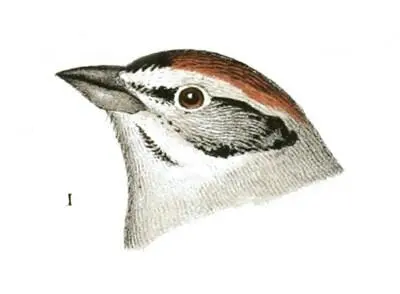
1. Spizella socialis, Ad. , Pa., 10150.
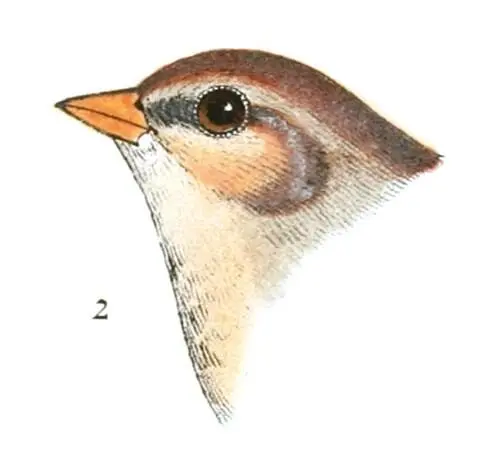
2. Spizella pusilla. ♀ Pa., 1378.

3. Spizella pallida. Ad.
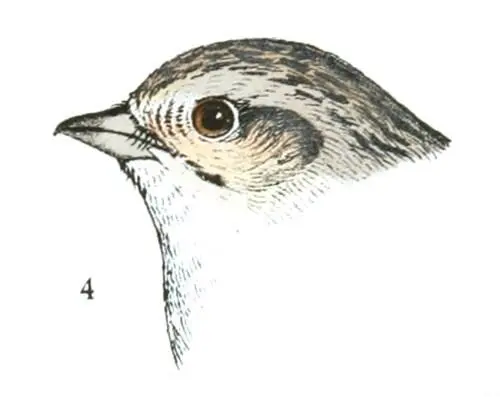
4. Spizella breweri. Ad. , Rocky Mts., 2890.
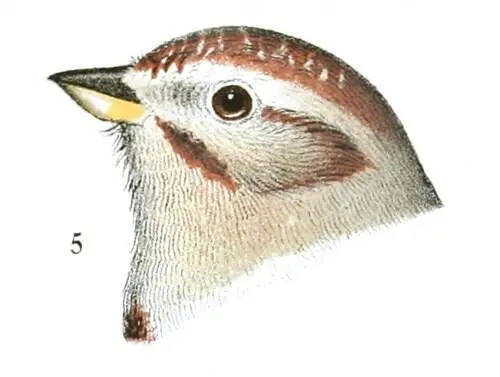
5. Spizella monticola.
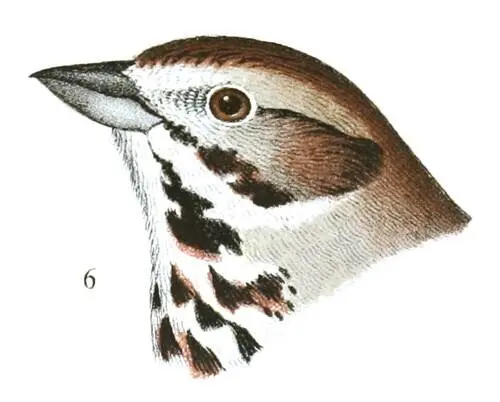
6. Melospiza melodia,. Pa., 2637.
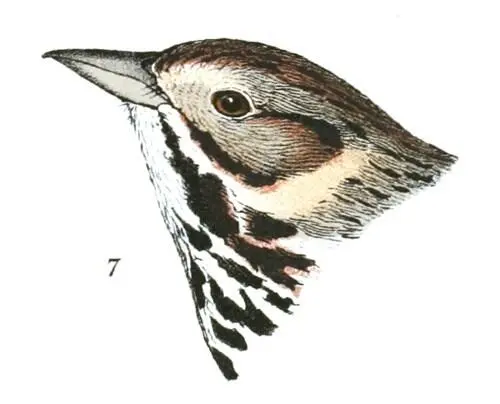
7. Melospiza samuelis. Cal., 7098.

8. Melospiza insignis. Kodiak, 52477.

9. Melospiza heermanni. ♂ Sierra Nevada, 53529.
10. Melospiza fallax. ♀ Nevada, 53537.
11. Melospiza rufina. Sitka, 46007.

12. Melospiza guttata. Washington Ter.
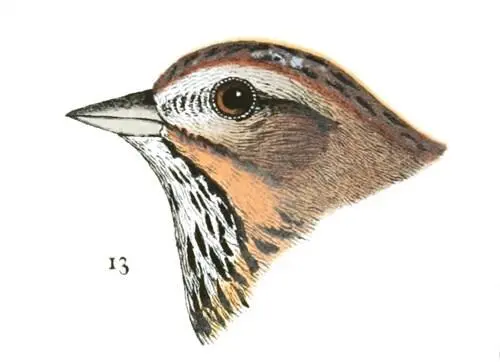
13. Melospiza lincolni. Pa., 937.
Their nests are constructed in a manner very similar to those of the Chipping Sparrow, loosely made of a few stems of vegetables, grasses, and sedges, and lined with hair or fine rootlets. Those placed on the ground are larger and more bulky, and those wrought into the twigs of a bush are made with more care and neatness of interweaving. The eggs are usually five in number, of an oblong-oval shape. The ground is a whitish clay-color, marked more or less fully with blotches of a ferruginous-brown. In some these markings are few, and arranged only about the larger end. In others they are generally diffused, and impart a deep ferruginous color to the whole egg, and disguise or conceal the ground. They vary also in size,—in length from .70 to .63 of an inch, and in breadth from .52 to .50. Their usual size is .70 by .52.
Two nests of this bird taken in Lynn, Mass., by Mr. George O. Welch, are characteristic of their usual style in architecture. One of these has a diameter of four and a height of two and a half inches. Its base, as well as the great mass of its periphery, is made of a very loose intertwining of minute stems of vegetables and dry grasses. The ends of these project from the exterior of the nest at the upper rim, and present a very peculiar appearance, as of an enclosure of palisades. The interior is lined with horsehair. The other is made of similar materials, of a less rigid character and closer texture. Its rim presents the same peculiarities of projecting ends, arranged like a fence above the nest itself. Its dimensions also are about the same. It is, however, much more compactly constructed, with thicker walls and a less open network of dry grasses, and stiff wiry stems of dried plants intermixed with a few pine leaves. The whole is very carefully and warmly lined with horsehair and the softer fur of small quadrupeds. These nests contained, one three, and the other four eggs.
Fringilla socialis , Wilson, Am. Orn. II, 1810, 127, pl. xvi, f. 5.—Aud. Orn. Biog. II, 1834, 21; V, 517, pl. civ. Spizella socialis , Bon. List, 1838.—Ib. Conspectus, 1850, 480.—Baird, Birds N. Am. 1858, 473.—Cooper & Suckley, 203.—Samuels, 320. Emberiza socialis , Aud. Syn. 1839.—Ib. Birds Am. III, 1841, 80, pl. clxv. Spinites socialis , Cabanis, Mus. Hein. 1851, 133.
Sp. Char. Rump, back of neck, and sides of neck and head, ashy. Interscapular region with black streaks, margined with pale rufous. Crown continuous and uniform chestnut. Forehead black, separated in the middle by white. A white streak over the eye to nape, and a black one from the base of the bill through and behind the eye. Lores dusky. Under parts unspotted whitish, tinged with ashy on the sides and across the upper breast. Tail-feathers and primaries edged with paler, not white. Two narrow white bands across the wing-coverts. Bill black. Length, 5.75; wing, nearly 3.00; tail, 2.50 (or less).
Young. Immature birds and frequently the adult females with the cap streaked with blackish lines, the chestnut nearly or sometimes quite wanting. Birds of the year streaked beneath and on rump.
The color of bill varies; sometimes entirely black throughout, sometimes very light (but never reddish as in S. pusilla ), with all intermediate stages. There is usually, however, a dusky tinge in the upper bill, wanting in pusilla , and the lores are almost always more or less dusky in all stages of plumage.
Hab. Eastern Province of North America; north to Great Slave Lake, and south to Orizaba, Eastern Mexico, where it is resident. Oaxaca (perhaps var. arizonæ ), Jan. (Scl. 858, 304); Xalapa (Scl. 1859, 365); Cordova (Scl. 1856, 305); Cuba (Lawr. 1860, VII., 1269).
Habits. The common Chipping Sparrow, so familiar to all in the eastern portion of the United States, is not only one of the most abundant, but one of the most widely distributed of our North American birds. It is found from the Atlantic to the Pacific in its two races, and breeds from Georgia to the Arctic Circle. At different seasons of the year it is found in all portions of North America to Mexico. Along the Atlantic coast it nests at least as far north as New Brunswick and Nova Scotia; in the extreme northern portion of the latter Province I found it one of the most abundant birds.
Читать дальшеИнтервал:
Закладка:
Похожие книги на «A History of North American Birds, Land Birds. Volume 2»
Представляем Вашему вниманию похожие книги на «A History of North American Birds, Land Birds. Volume 2» списком для выбора. Мы отобрали схожую по названию и смыслу литературу в надежде предоставить читателям больше вариантов отыскать новые, интересные, ещё непрочитанные произведения.
Обсуждение, отзывы о книге «A History of North American Birds, Land Birds. Volume 2» и просто собственные мнения читателей. Оставьте ваши комментарии, напишите, что Вы думаете о произведении, его смысле или главных героях. Укажите что конкретно понравилось, а что нет, и почему Вы так считаете.
